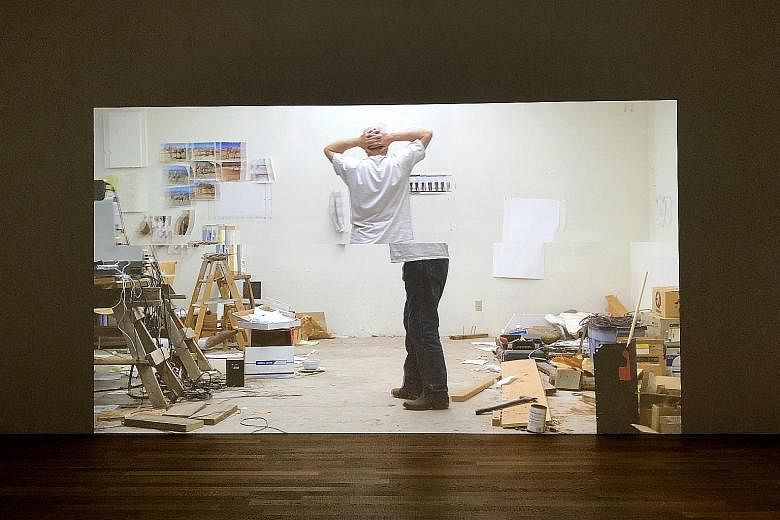NEW YORK • All the muses are summoned in a massive Bruce Nauman retrospective at the Museum of Modern Art (Moma) in New York.
There is poetry, both epic and lyric, and dance too, as well as ribald and high comedy.
But the muse most persistent is definitely Clio, the muse of history, whose spirit is woven through the better part of his repertoire.
Bruce Nauman: Disappearing Acts is billed as the first comprehensive overview of his work in a quarter-century, with 165 pieces.
It fills the full sixth floor of the museum's main gallery space in Manhattan and the entirety of Moma PS 1, the grittier and edgier affiliated gallery space in Queens.
It follows his work from early films and drawings made in the mid-1960s to work featured in the Venice Biennale of 2009, where he represented the United States, to recent pieces, including a touching reprise of ideas he explored in the early days of his career now remade in 3D video.
Any artist who works as long as Nauman, 77, has been working will leave audiences thinking about history and his career, which began in the Vietnam War era, is now well into its sixth decade.
But history is not present in his work in any obvious, political sense.
There are occasional references to the larger themes of American life - its banality, hypocritical public discourse, predilection for war and violence, and toll on the natural world.
But, more essentially, the history that courses through Nauman's career is the history of art and the history of his own body, which come together in certain works explicitly and throughout the show in a more general sense.
The exhibition's curator, Ms Kathy Halbreich, has chosen the idea of absence or disappearance as an overarching theme.
Nauman has been profligate with ideas and any individual work is more interesting on its own terms than when it is subsumed under a general curatorial theme.
There is definitely a sense of absence in some works, including a 1970 installation of narrowly spaced wallboards that invites the viewer to walk through a tall, tight passageway, invading an empty, claustrophobic space and sensing the pressure of containment on the body.
But disappearance or absence seems inadequate to the haunting effect of these physically challenging works, which somehow mimic the mental process of making sense of Nauman's work, the way in which it always seems to lead to a mental dead end, in a good way, making one aware of how thinking is also frustrating, full of mischance and rarely with any sense of conclusion.
This would all be tediously narcissistic if it were not for the persistence of history in the best of Nauman's oeuvre. Early in his career, he made drawings and an iron sculpture that referenced the work of the much older and greatly esteemed artist Henry Moore.
In Henry Moore Bound To Fail and Seated Storage Capsule (For Henry Moore), he struggles to contain or constrain the power of the modernist sculptor, whose work was deemed old-fashioned by many artists of Nauman's generation.
But there is an important distinction between art that is critical of the past and art that is contemptuous of it, and Nauman almost always practises the former.
These references to earlier artists also serve to contain and constrain Nauman's work, giving it humility and depth, and making even his most outlandish ideas more coherent.
The most recent work on view is 2017's Contrapposto Split. It uses 3D video and a split screen to suggest the way in which time has fractured the artist's sense of his own body, the way in which, with age, none of the pieces can ever quite fit together with the same snug perfection of youth.
If you go, leave this work for last. The sadness is more palpable, which is the sadness of life in general, the pervasive, ineluctable sadness that is built into the history of every human body, known with gathering force as you move through the years and spend down time.
WASHINGTON POST
• Bruce Nauman: Disappearing Acts is on view at the Museum of Modern Art and MoMA PS 1 in New York through Feb 25.

